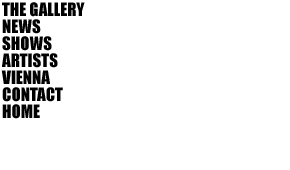
ANGELA BULLOCH
Opening: 11/10/2004, 7 p.m.
Duration of exhibition: 11/11/2004 - 01/09/2005
Press release
As early as the late 1980’s and early 1990’s Angela Bulloch created a network of opposing visual systems, which have lent her oeuvre an extreme density. At the one end of her work, minimal art figures as the already historical variable of a contemporary concept, extending beyond formal references. At the other end, the fringe areas of the art system seem to be deliberately included, with cultural phenomena being integrated in her work. These phenomena were (and are) not so much part of a possible (art)historicizing system of ascription than the subject of ongoing debates in cultural studies. Her critical, media-reflexive reference to film, TV and - in her more recent work - to digital culture can hardly be overlooked. What makes her oeuvre so appealing in a time in which the “new media” are making inroads in the art scene, over and beyond its complex historical and contemporary references, is her understatement or what at times appears to be a certain non-chalance that can be found throughout her entire work.
Apart from her sound and light pieces, sign machines, murals, photographic series, video installations and text works (Rules), there are the “pixel boxes“ that have been created over the past few years. These are simply cubes made of wood or plastic that are based on a modular light-mixing system. On the inside of each box there is a RGB-light system consisting of a red, green and blue fluorescent tube capable – like a monitor - of generating 1,6 million colors, The boxes can be connected and programmed to show any picture information. On each of the glass fronts of the cubes, Bulloch zooms in the smallest distinctive semantic unit existing in the digital world to depict a screen: a pixel, derived from picture element, which according to Bulloch is more a logical than physical unit.) The process of enlarging individual pixels on a square of a square meter responds to the extreme reduction in the resolution of the given picture. Even where several boxes are connected (boxes that can assume the size of a cinema screen) the form and surface only generate extremely limited information, since no indexical relation to referent can be recognized. With her work Bulloch thus moves at the interface between abstraction and imagined pictoriality: What happens here in terms of color never becomes completely detached from the processed original material, that is to say, it is never pure abstraction but always also an abstraction of SOMETHING. The pixel boxes thrive from this tension in all their different (theme-related) constellations: on the one hand, the minimalistic surface/form, and on the other, the semantic sound box – the trace of memory accompanying a given piece, based for instance on the filmic memories of the viewers. ”It is this very tension that precludes a merely formalistc-consumerist approach, but also one that is purely content-oriented, that accounts for the esthetic quality of Bulloch’s works and it is in this sense that they are art.” (Juliane Rebentisch).
At the Engholm Engelhorn Galerie Angela Bulloch is also presenting a piece that refers to a photograph that was made from the inside of a pixel box. “The mystery of the minimalist box was never something that could be fully fathomed by unscrewing the box to see what’s on the inside – this is something that Bulloch has always understood. Instead it has to do with the never-ending movement of the production of meaning in the processes of esthetic experience through which the information on the inner life of the box can sometimes be inverted as the crucial context of the piece – but only to then, at the next moment, withdraw again to the inside as irrelevant information.“ (Juliane Rebentisch). Bulloch addresses this aspect by digitalizing a photograph of this inner view, blowing it up so much or letting it dissolve into individual pixels so that the referent can hardly be recognized as such, giving way to more historical (again new, different) references to a painting by Bidget Riley whose work provided inspiration for a further piece by Bulloch in Vienna..
For further information please
contact Kerstin Engholm at +43 1 585 7337 or office@engholmengelhorn.com.

